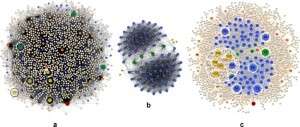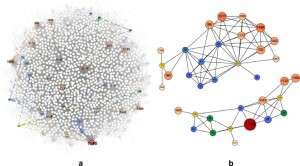S Agreste, S Catanese, P De Meo, E Ferrara, G Fiumara. Network structure and resilience of Mafia syndicates. Information Sciences, 2016
Useful links: Journal page | Arxiv
In this paper in collaboration with colleagues from University of Messina (Italy) we present the results of our study of Sicilian Mafia organizations using social network analysis.
The study investigates the network structure of a Mafia syndicate, describing its evolution and highlighting its plasticity to membership-targeting interventions and its resilience to disruption caused by police operations.
We analyze two different datasets dealing with Mafia gangs that were built by examining different digital trails and judicial documents that span a period of ten years. The first dataset includes the phone contacts among suspected individuals, and the second captures the relationships among individuals actively involved in various criminal offenses.
Our report illustrates the limits of traditional investigative methods like wiretapping. Criminals high up in the organization hierarchy do not occupy the most central positions in the criminal network, and oftentimes do not appear in the reconstructed criminal network at all. However, we also suggest possible strategies of intervention. We show that, although criminal networks (i.e., the network encoding mobsters and crime relationships) are extremely resilient to different kinds of attacks, contact networks (i.e., the network reporting suspects and reciprocated phone calls) are much more vulnerable, and their analysis can yield extremely valuable insights.
Cite as:
Santa Agreste, Salvatore Catanese, Pasquale De Meo, Emilio Ferrara, Giacomo Fiumara, Network structure and resilience of Mafia syndicates, Information Sciences, Volume 351, Pages 30-47, 2016.

